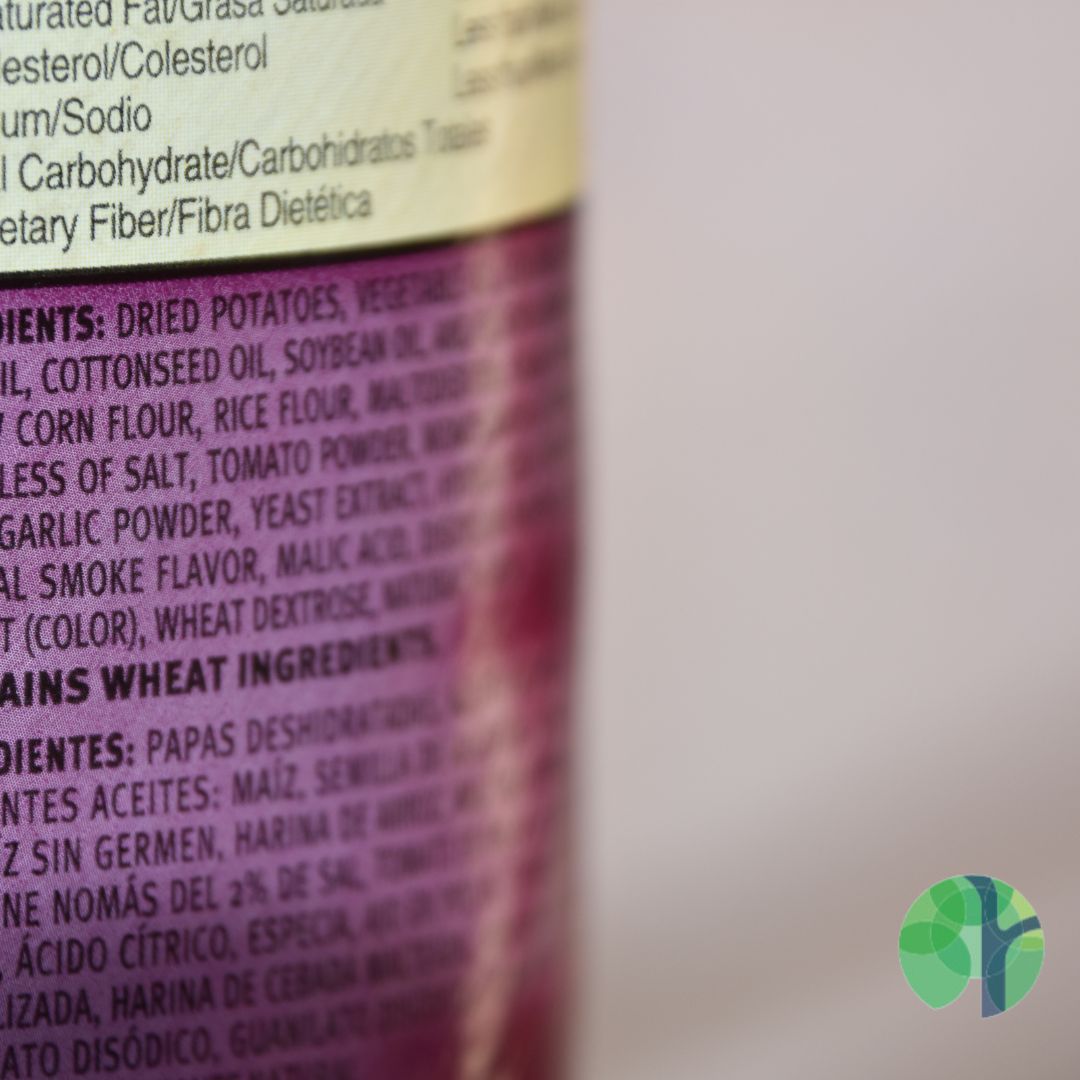
Is it the Menopause?
Officially menopause is when you’ve gone for 12 months without a period at all which signifies the end of female reproductive capabilities. However, most symptoms occur in the 2-10 years leading up this – which is known as perimenopause.
Unfortunately, there's no specific blood test for perimenopause. And this is where a lot of confusion starts to arise. Many of my clients have odd symptoms which send them to the GP, only to realise a couple of years later that it was probably perimenopause…
I often use the DUTCH test, a dried urine test, which can be very useful in looking at a complete balance of sex and stress hormones during this turbulent time. While testing hormones during perimenopause and menopause is not often done in conventional medicine, understanding hormone levels and their metabolism (as well as assessing our stress levels) can help guide recommendations to support women during this stage in their life. Do get in touch with me if you’d like to discuss this further.
But what are the symptoms of perimenopause? Because our hormones affect our whole bodies, not just our sexual characteristics, perimenopause can bring a whole heap of symptoms with it, such as:
(Please note: some of these symptoms may not be perimenopause – so if you’re worried, do check with your GP!).
When and how we suffer tends to be based on a combination of genes, our health, and our environment. If you can, it might be good to ask your mum when she had hers and how it affected her. But, overall, it’s one helluva time. No wonder it’s sometimes called second puberty.
Most of the symptoms we have are due to fluctuating oestrogen and intermittent progesterone, brought about by the natural retirement of our ovaries.
Why is oestrogen so important?
Well, we have receptors to oestrogen all over our bodies – they’re not just responsible for the reproductive cycle. They are found in our brains, bones, guts – just about everywhere.
Oestrogen helps us build muscle, regulates bone density, and promotes healthy skin. It helps maintain healthy brain function. It looks after our heart and cholesterol levels. And it even has a hand in our gut function. But probably most noticeably is abdominal weight gain or ‘menobelly’. This is where we start to gain weight around our middles that we possibly didn’t have before, and it’s now more difficult to get rid of too.
So, how do you know if you’re in menopause?
As a rule of thumb, we can tell that it’s probably perimenopause if you’re having:
or
If you’re still not certain, check in with your GP or nurse, or book in a free call with me here at the clinic.

Mushroom Miso Soup
Including fermented foods in your diet is a great way to improve gut health, digestion and all round wellbeing. This is something I work on with nearly every client and can have a positive effect on their health.
Miso is an easy fermented food to add in, as it doesn’t have such a particular flavour as some other fermented foods. Miso is a thick paste made from fermented soybeans and is a staple of Japanese cooking. Go for an unpasteurised version and try not to overheat, so you avoid killing off the beneficial bacteria.
Serves 4
Ingredients:
Method:

How to regain your sense of calm
Palpitations, a dry mouth, sweating, insomnia are just some of the unmistakable signs of anxiety. Everyone has experienced these symptoms at some point in their life. Who hasn't felt stage fright before a presentation, hyperventilated before an exam or spent a sleepless night before their dental appointment?
Under normal circumstances, you get through the situation in question unscathed, and life goes on. However, it is very different for people who suffer from anxiety disorders. Patients with this condition experience virtually no relief or respite because their anxiety is unrelated to a specific situation or event and is – objectively – unfounded. There is no single challenge to get through and move on. Their anxiety goes on constantly, from one situation to the next, and the next, and the next ...
Although anxiety disorders were common even before the Coronavirus pandemic, the stress of lockdowns and worry about our own health and that of loved ones, our jobs and our financial security has sent numbers surging. A team of researchers at the University of Manchester are currently looking into this. Although the work is still ongoing, they predict that mental health problems will continue to be affected by the pandemic for years to come.[1]
So, where does nutrition come into it? At first glance, it may seem preposterous to say that diet influences how we feel; but think about it: In the cold, hard light of science, feelings are chemistry! Of course, in the first instance, it is our environment, our experiences, and to an extent, our personality that makes us feel the way we feel. But our feelings of fear, anger, overwhelm or love and confidence trigger the release of hormones in our body, which is where chemistry kicks in. We need the happy hormone serotonin and the pleasure hormone dopamine to feel good, the sleep hormone melatonin to sleep, the stress hormones adrenaline and cortisol for our get-up-and-go and to fight or flee when we’re under threat. Hormones work in unison with each other. Some hormones suppress others; some trigger the release of others. But for these feedback mechanisms to work, for our body to even be able to manufacture the chemicals that we need, we must supply the raw materials they are made of.
Those raw materials are fatty acids, proteins, vitamins, minerals, and phytonutrients – nutrients. What’s more, even our friendly gut bacteria contribute to how we feel by extracting more nutrients from our food for us, manufacturing some, such as short-chain fatty acids, from scratch and even providing some ready-made serotonin! So, if you think of feelings that way, what we eat is bound to have a massive impact on how we feel and how we cope with the challenges life throws at us.
Don't get me wrong; I’m not saying that diet will cure an anxiety disorder. However, if we try and fuel our body with poor quality food that does not provide the building blocks of the hormones and catalysts our brain chemistry requires, we’ll have a much harder time overcoming mental health issues.
So, what are these nutrients our body needs, particularly when we are anxious?
Magnesium is often referred to as ‘nature’s tranquiliser’ – which hints at just how crucial this mineral is for supporting balanced mood, relaxation, and deep sleep. One reason why magnesium helps us cope with anxiety might be that it plays a role in nerve transmission.[2]The mineral is not even hard to find. There’s some in most foods, particularly in green leafy vegetables – think broccoli, spinach, kale, and watercress – but also in grains, such as brown rice, buckwheat and quinoa, nuts and seeds, or fish and seafood. Despite this, deficiency is common, which may have something to do with our penchant for convenience and junk foods that are just not as nutritious as real food.
A 2019 study found that the amino acid L-theanine might help manage anxiety and support a balanced stress response. L-theanine is found in green tea.[3] It increases the activity of the neurotransmitter GABA, which has calming, anti-anxiety effects. The amino acid also raises dopamine and the creation of alpha waves in the brain. This is because l-theanine can cross the blood-brain barrier, a membrane that protects our brain from unwanted and harmful substances. The high intake of green tea by Buddhist monks may contribute to their famously calm demeanour and intense focus during meditation. If you want to give green tea a try, be sure to choose an organic one to reduce your exposure to pesticides and other toxins, which have been found to disrupt the brain’s stress circuitry.[4]
The authors of a 2020 research review agree that the role of nutrition in the management of mental health disorders is underestimated.[5] They reviewed the existing research into omega-3 fats in connection with anxiety and found that this type of fat is critical for brain health and has been shown to reduce anxiety symptoms. As vegan diets are becoming more popular, it is important to note that omega-3 fats from plant sources, such as flaxseed oil or walnut oil, does not cover our daily requirements, let alone achieve therapeutic levels. The omega-3s these foods contain are inferior to the ones we need: EPA and DHA. Although the body can make those long-chain fatty acids can from plant-source omega-3 (alpha-linoleic acid or ALA), the conversion is sluggish and easily disrupted. Only about 5 per cent get converted. If you are vegan, do not like fish, or are allergic to it, your diet alone will cover your needs. I recommend finding a good-quality supplement with omega-3 from marine sources (i. e., algae), which is the only vegan source of DHA.
When talking about anxiety and nutrition, we must not neglect the role of the microbiota, the friendly bacteria in our gut. The majority of available research studies in 2019 showed that it is beneficial to give our gut bacteria some TLC. Interestingly, “non-probiotic interventions were more effective than the probiotic” ones.[6]
That suggests that just popping a probiotic capsule may not be enough – and that’s no surprise, really. Don't get me wrong; probiotics are beneficial; there is no doubt about that. However, their contents – live bacteria, e. g. Lactobacillus and Bifidobacterium species – are not going to settle in the gut. They are only travelling through, and while doing so, they help create a bacteria-friendly climate and temporarily crowd out undesirable microbes. But really, they are only lending a helping hand to our own, indigenous bacteria. Those are the ones that are at home there, and those are the ones that can protect our gut, feed our brain, improve our mood, and keep us healthy.
You can look after your friendly bacteria by giving them real food, especially fibre-rich plant foods, including vegetables, fruit, nuts, seeds, pulses, whole grains, herbs, and spices. Variety is key here. While probiotics – especially in the form of fermented foods like sauerkraut, kimchi, live yoghurt, kefir and kombucha – are great, prebiotics – fibre – are even better. We still need to learn much more about all the different microbes living in our guts, but what we do know is that the more different species we have, the healthier we are. How do we cultivate a variety of species? By keeping our diets interesting! Different microbes have different preferences. By varying what we eat, we are creating a desirable place for them to live.
To keep everyone happy, it is also essential to avoid what harms the microbiota. Alcohol acts like a weedkiller on your internal garden. Food additives reduce a protective type of antibody called secretory immunoglobulin A (or sIgA, for short), and emulsifiers are particularly damaging for the gut. Sugar promotes yeast overgrowth, which can overwhelm the beneficial bacteria and make it difficult for them to adhere to the gut wall.
Of course, although hugely important, diet is not everything. Lifestyle factors, too, play a crucial role in mental health. It will come as no surprise that it is worth reducing stress as much possible if you suffer from anxiety. Interestingly, stress also damages the microbiota and interferes with the conversion of omega-3 fatty acids – among many other things, so just getting on top of stress will do you a whole lot of good.
I know that that is easier said than done, but there is a shedload of information on stress management on the internet, ranging from relaxation techniques, such as meditation or breathing exercises, to self-care and me-time tips.
So, as you can see, you don’t have to take anxiety attacks lying down. There is a lot that you can do to avoid them or to aid your recovery. And if you’d like to talk further about this, why not book a free 30 minute health review with me here?
[1] https://www.nature.com/articles/d41586-021-00175-z
[2] Kirkland AE, Sarlo GL, Holton KF (2018): The Role of Magnesium in Neurological Disorders. Nutrients. 2018 Jun 6;10(6):730.
[3] Lopes Sakamoto F, Metzker Pereira Ribeiro R, Amador Bueno A, Oliveira Santos H (2019): Psychotropic effects of L-theanine and its clinical properties: From the management of anxiety and stress to a potential use in schizophrenia. Pharmacol Res. 2019 Sep;147:104395.
[4] Caudle MW (2016): This can't be stressed enough: The contribution of select environmental toxicants to disruption of the stress circuitry and response. Physiol Behav. 2016 Nov 1;166:65-75.
[5] Polokowski AR, Shakil H, Carmichael CL, et al (2020): Omega-3 fatty acids and anxiety: A systematic review of the possible mechanisms at play. Nutr Neurosci. 2020 Jul;23(7):494-504.
[6] Yang B, Wei J, Ju P, Chen J (2019): Effects of regulating intestinal microbiota on anxiety symptoms: A systematic review. Gen Psychiatr. 2019 May 17;32(2):e100056.

My Top 5 Tips for Building Healthy Habits
People frequently think about ‘being healthy’, without paying much detail to the specific actions that they are taking (or not) to take care of themselves.
Would you describe yourself as a healthy person?
You might say ‘I go to the gym’ but how many times have you been in the last month?
You might think you get enough fruit and veg into your diet each day, but how many portions a day did you average over the last few weeks?
Did you ever think about the extent to which you are tired, whether your hormones are balance, the amount of water you drink, and so on?
In our hectic lives, we often overlook our wellbeing because dealing with it can be complicated and time-consuming. You owe it to yourself to stop putting up with the symptoms of ill health. Some of the symptoms you experience will need a longer and more specific plan to get meaningful results. Other little niggles can improve just by making some small but effective changes.
A great many people really want to improve an aspect of their health, like losing weight, clearing up their skin, reducing troublesome digestive symptoms. And, while they might have the knowledge of what to do, they don’t consistently do it.
Worse still, they actually sabotage their own progress. If you see something of yourself here, read on…
Have you ever heard that little voice in your head that tells you that you deserve a treat? I mean, you’ve just hiked five miles! Surely, it’s okay to celebrate with a cup of tea and a slice of ‘Death by Chocolate’?
Have you ever spent January virtually living in the gym, only to find yourself slumped on the sofa, clutching the remote, come February?
Maybe you said: “Enough is enough”, dived headfirst into Magic Cleaning, but have been navigating around that pile of clothing in the middle of your bedroom ever since that fateful day?
Let’s take a closer look at the top five reasons why it is that we know exactly what to do but are just not doing it – and, of course, the fixes you can use to get what it is that you want with more flow, ease and consistency.
Did your doctor tell you that you need to lose weight to get your blood pressure down? Did your boss send you on a management course, so you can lead a team and advance your career? Did your kids advise you to go vegan to save the planet?
That’s excellent advice and following it would be to your advantage, but weight loss, studying or going vegan doesn’t always come easy. Unless you decide that that is what you want, it’ll be tough to get yourself motivated and sustain momentum.
The fix: Making it your idea
Not everything other people think would be good for us really is. If, for example, your partner recommends cosmetic surgery because that would make him love you more, that is not a goal you will consider (I hope).
However, if your doctor is concerned about your blood pressure and advises you to lose weight, it’s a different matter.
Of course, it makes complete sense, and you have a go but falter after just two weeks because weight loss can be really hard sometimes. Health should be motivation enough to hang in there, but let’s face it, for many people, it just isn’t.
But what if you could come up with a reason for weight loss that inspires YOU?
Sit down with a pen and paper and list all the advantages of losing weight that you can think of. Then take another look at your list and see whether you can see anything there that would motivate you MORE than optimum blood pressure.
Everyone has a personal value system, which developed over the course of their lives and depends on their experiences, our circumstances, and their family’s values.
While one person may attach great importance to material wealth and money, other may not consider it important at all. If you are not entirely behind the ‘cause’, you may struggle to keep going.
The fix: Get clear about your values
Examples of values are family, loyalty, honesty, compassion, health, freedom etc. Let’s take a look at that in a little more depth.
Having aspirations is a wonderful thing. We should all strive to better ourselves and realise our dreams. However, you need to keep our feet on the ground. If you set yourself the goal to learn how to play the saxophone with the aim of joining a jazz band, touring New York clubs and by next year, you may be overstretching yourself a bit – and that can be the exact opposite of empowering.
Although you may be a great talent, it is doubtful that you’d meet that goal, and realising that at some stage may put you off playing the saxophone altogether. Which would be a shame.
The fix: Set SMART goals
Research shows you are 80% more likely to achieve your goals if you:
What are SMARTER goals?
SPECIFIC - “Lose weight” or “get fit” is not specific. “Lose a stone” or “Run 5k” is.
MEASURABLE – weight, waist circumference, minutes run, number of steps …
ACHIEVABLE – see #5
REALISTIC – see #4
TIME-BOUND – A goal (or intermediate goals) should have a deadline
EXCITING - find a motivation that works for you, see #1
REWARDED
Say you’d like to run the London Marathon next year to get healthy and raise money for your favourite charity at the same time. Excellent idea! Oh, you don’t currently run and never have? Ah …
In that case, your goal may be a little too big. While running a marathon one day is absolutely within your capabilities, next year may be too soon. Signing up and committing may cause you to feel overwhelmed and give up.
The fix: Break it down to baby steps
The thought of running a marathon, sewing a ballgown or giving a 90-minute lecture in front of an academic audiences a little daunting – unless you’re already a runner, seamstress or public speaker.
Intermediate goals – aka ‘baby steps’– can help. They, too, should be SMARTER (see above), and then they’ll help you approach the big goal step by step. For example, you could:
Similarly, try sewing a sofa cushion (skirt, dress, trousers, baby grow, ballgown) or seek opportunities to speak in front of a friendly audience for 1 minute (5 minutes, 15 minutes and so on - there are workshops, clubs and networking groups that allow you to practice).
Giving up too soon is one of the most common reasons you might not achieve the goals you have set yourself. Of course, it makes no sense to strive for a goal that is doomed to failure. You’re not going to jive like a pro at your company’s Christmas ball if your first dance lesson is tomorrow.
But you CAN learn how to jive, even to competition level, just not overnight. Some things take time, and even things that look easy – say, meditation – take practice. Sadly, many of us lose sight of the goal at the slightest resistance or even when success does not materialise at the expected time.
The fix: Accountability
There are very few people who just decide that they want to do something and then go off and do it. Most of us need some sort of accountability to keep us going, especially if achieving the goal may take some time, and long-term commitment is required.
Some people make a public announcement, e.g. post on social media that they are going to quit smoking or training to climb Mount Kilimanjaro. Others tell a friend or find a buddy.
American writer Gretchen Rubin likes to tell the story where two gym buddies exchanged a trainer after every gym session. That way, they knew that their friend wouldn’t be able to train without them and felt obliged to show up every time. Genius!
A great way to create accountability for yourself is by working with a coach. Your coach will support you week by week and gently hold you accountable for actions so that you achieve what you want and more.
Does this resonate with you? Every day in clinic I help my clients to think clearly as to how they can achieve their health goals. As well as using nutrition and lifestyle evidence to design a plan, I help them define what they really want to achieve – and how they can get there. Plus, I give them accountability along the way. Would you like to know more? Why not book in a free 30 minute health review by clicking here. I'd love to help you.

Spinach and Lentil Curry
This is a great meal to batch cook. You can make a huge pot at the weekend (with the spinach you’ve grown – see below), and then divide into portions and pop in the freezer for using at another time. This means you always have a healthy meal on hand, even if you’re super busy.
Ingredients:
1 tbsp extra virgin olive oil or ghee
1 large onion, sliced finely
3 cloves garlic, crushed
1 inch ginger, skin removed and grated
2 tsp curry powder (strength to taste)
1 tsp cumin
½ tsp sea salt
Pinch of chilli flakes, to taste
Juice of 1 lime
120ml vegetable bouillon
½ can coconut milk
400g cooked lentils (you can buy these tinned)
½ pack fresh coriander, chopped
200g fresh spinach
Method:

Top 10 Ingredients to Watch Out For
I'd need a lot more space to list out all the names on the naughty list but this list, while not exhaustive, is a good starting point if you want to know you are eating as well as you can for your health.
Bottom line: if you can't pronounce the ingredient, it's probably not something you want to put into your body! And if you don't recognise something as 'food', chances are your body won't either.
Blue 1, Caramel color, Red 3 (Erythrosine), Red 40, Titanium Dioxide, Yellow 5 (Tartrazine), Yellow 6.
Autolysed yeast extract, hydrolysed protein, monosodium glutamate (MSG), “natural flavours”.
Aspartame, sucralose, and saccharin are some of the main ones.
There are many names for sugar, including: glucose, fructose, sucrose, dextrose, maltose, honey, treacle, agave, maple syrup, fruit juice, lactose, isoglucose, dates, dried fruit, raisins/sultanas, grape concentrate.
Or other processed flours.
Rapeseed (aka canola oil) unless cold pressed, corn, partially hydrogenated oils, soybean.
BHA (butylated hydroxyanisole), BHT (butylated hydroxytoluene), calcium propionate, propylparaben, methylparaben, propyl gallate, sodium benzoate, potassium benzoate, sodium nitrate, sodium nitrite, sodium phosphate, TBHQ (tert-butylhydroquinone)
Carrageenan, lecithin, gellan gum, cellulose gum, monoglycerides, diglycerides.
Azodicarbonamide, calcium peroxide, DATEM (diacetyl tartaric acid esters of monoglycerides).
Soy protein isolate is a common highly processed genetically modified protein supplement in many ‘healthy’ or diet foods.
If you’d like to know more, why not download my free guide to Making Sense of Food Labels here.
![]()
Please get in touch and find out more - I offer a free 30-minute exploratory call.